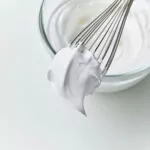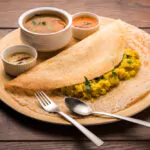Different Types Of Parathas: A Tantalizing Tour
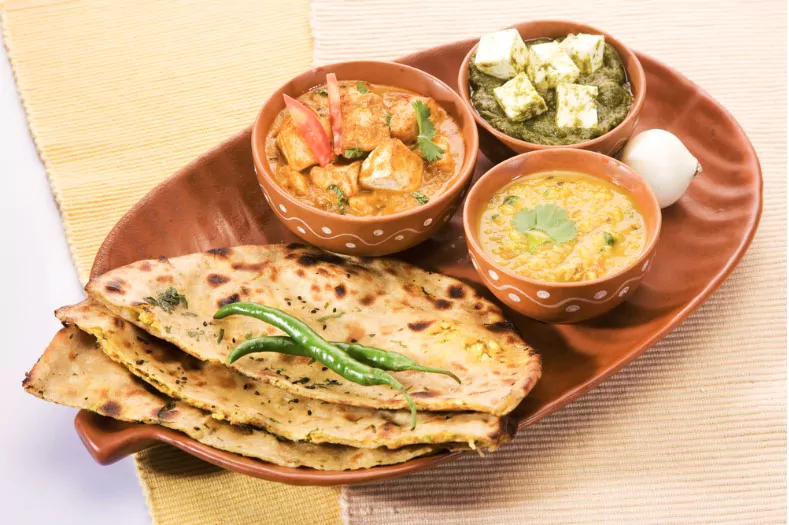
Parathas hold a prestigious place in the rich tapestry of Indian cuisine, bringing flavor, substance, and culture to tables across the subcontinent and beyond. Originating from North India, these wheat flatbreads serve as a delectable meal, reflecting a myriad of flavors and textures, accentuated by the diverse ingredients used in their making. In this extensive guide, we will explore the various types of parathas, their distinctive taste profiles, and their culinary heritage.
1 Introduction to Parathas
Parathas are a type of Indian flatbread predominantly made from whole wheat flour, bearing semblance to the myriad of breads that form a significant part of Indian meals. Parathas can either be plain or stuffed with a variety of ingredients, such as vegetables, paneer (cottage cheese), and even meat, making them a versatile and popular meal choice among North Indians. Parathas are usually pan-fried and typically served hot, accompanied by pickles, curd, or meat curries.
2 Different Indian Paratha recipes
Aloo Paratha
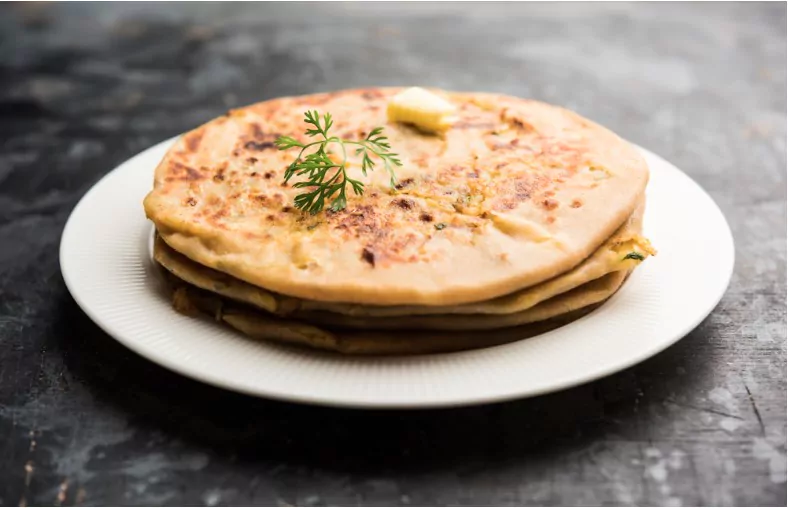
Aloo paratha holds the crown as one of the most popular paratha recipes. It is a delightful amalgamation of boiled and mashed potatoes, mixed with a selection of spices, then enveloped in a wheat flour dough. The paratha dough, stuffed with delicious, seasoned mashed potatoes, creates a mouth-watering symphony of flavors, making aloo paratha a perennial favorite.
Paneer Paratha
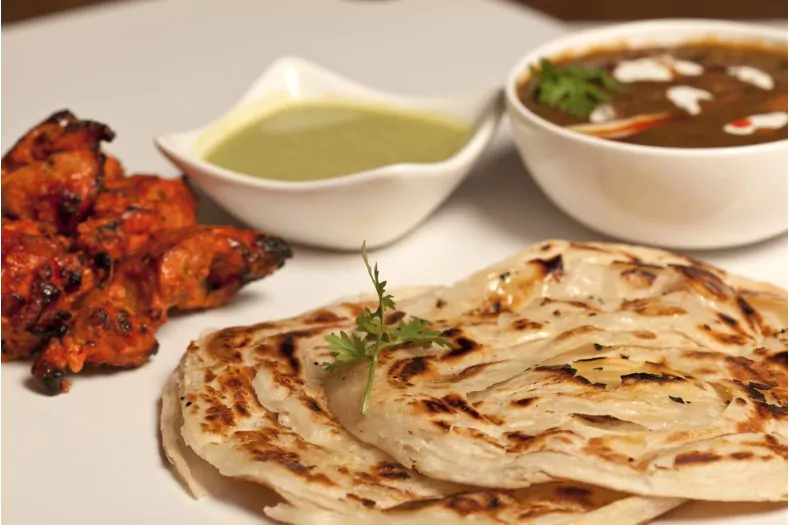
Paneer paratha is another widely cherished variation, wherein the paratha dough is stuffed with a rich mixture of grated paneer and a variety of spices. This form of stuffed paratha is a nutritious and filling option, offering the creamy texture and subtle taste of paneer, harmoniously blended with the robust flavors of the spices.
Gobi Paratha
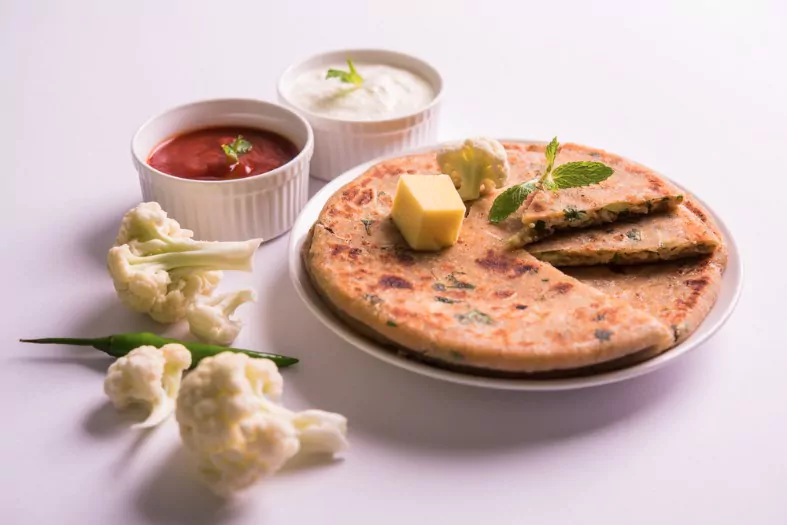
Gobi or cauliflower paratha is another distinguished member of the stuffed parathas family. The grated cauliflower mixed with a few spices forms the stuffing mixture for this delicious paratha. Gobi paratha can be enjoyed with yogurt or pickle and is a perfect illustration of how vegetables can be creatively used to elevate the taste of a simple wheat flatbread.
Spinach Paratha & Palak Paneer Paratha
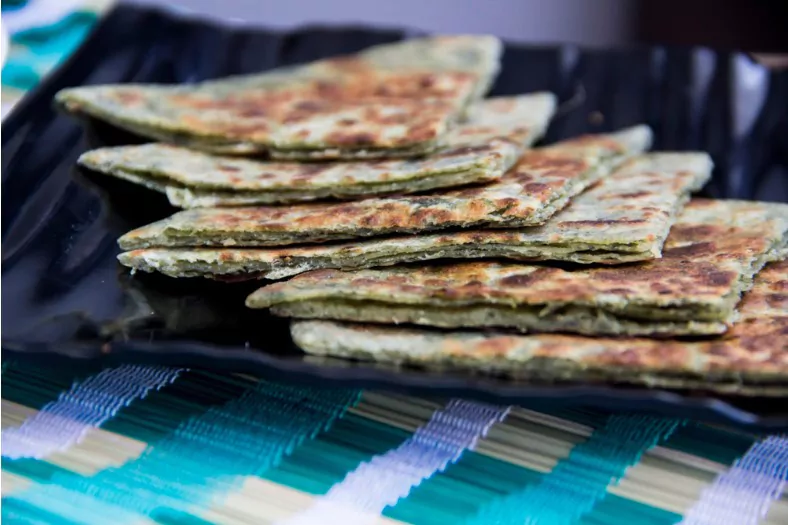
Spinach paratha is a healthy paratha variant, incorporating spinach puree into the dough, thus enhancing the nutritional value and adding a unique flavor. Palak paneer paratha takes this to another level by combining the goodness of spinach and the richness of paneer into a single, stuffed paratha, offering a balanced, healthy, and delectable meal.
Mooli Paratha
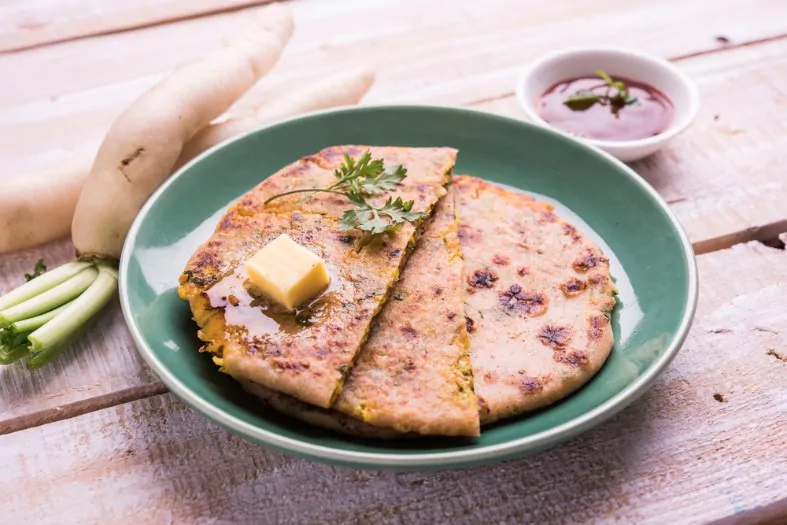
Mooli paratha is crafted from grated white radish, meticulously mixed with spices, and then stuffed into the paratha dough. The succulent taste of radish accompanied by its inherent sharpness makes mooli paratha an intriguing and refreshing variant in the stuffed paratha recipes collection.
Onion Paratha (Pyaaz Paratha)
Onion paratha, or pyaaz paratha, is an intriguing blend of finely chopped onions, green chilies, and spices enveloped in paratha dough. The crunchiness of onions and the blend of spices create a harmony of flavors that burst in your mouth with every bite.
Methi Paratha
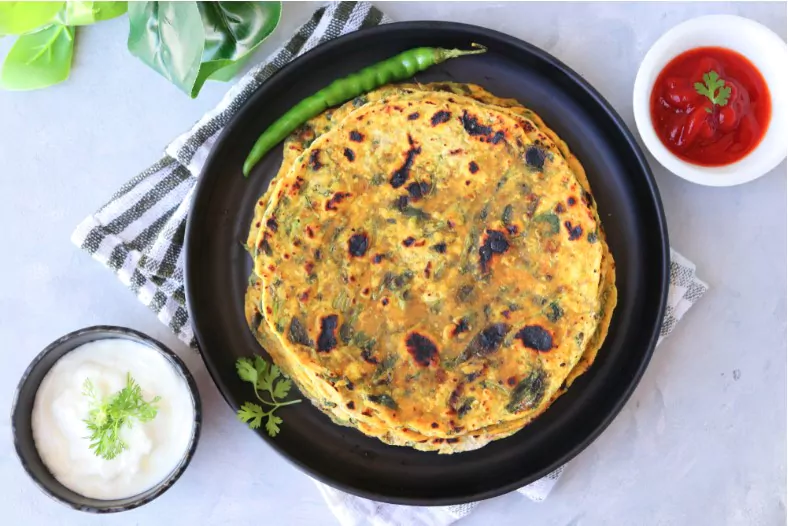
Infused with fenugreek leaves, methi paratha is a rich, flavorful variant, which is both healthy and tantalizing to the taste buds. Fenugreek leaves add a distinctive aroma and a slightly bitter taste, making this paratha a well-loved choice among the different types of parathas.
Dal Paratha
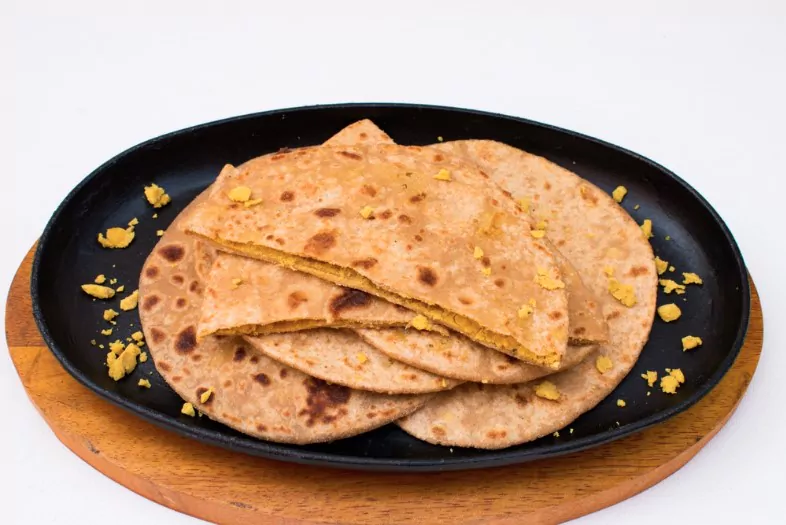
Dal paratha is an ingenious recipe, utilizing leftover dal mixed with spices as the stuffing mixture. The creamy texture of dal and the amalgamation of spices make this paratha a savory delight, providing an innovative twist to the Indian flatbread variants.
Cheese Paratha
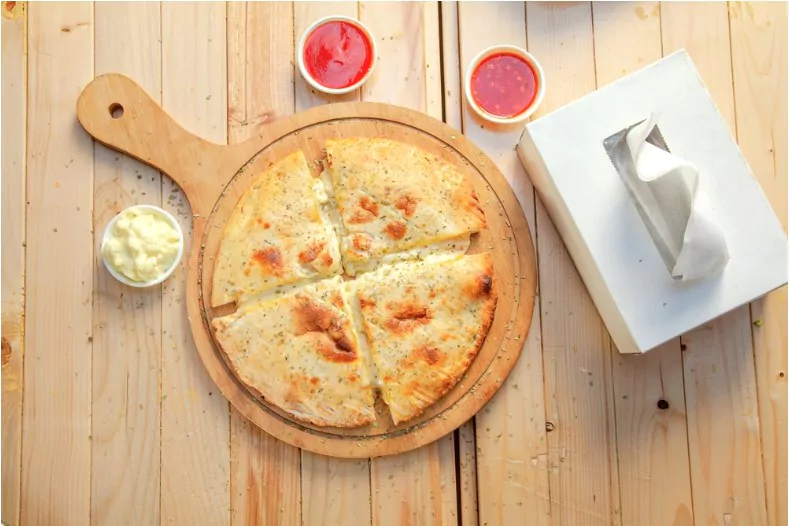
For those who enjoy the mellowness of cheese, cheese paratha is the go-to option. It combines the gooeyness of cheese with the crispiness of the paratha, offering a comforting and indulgent taste profile.
Sattu Paratha
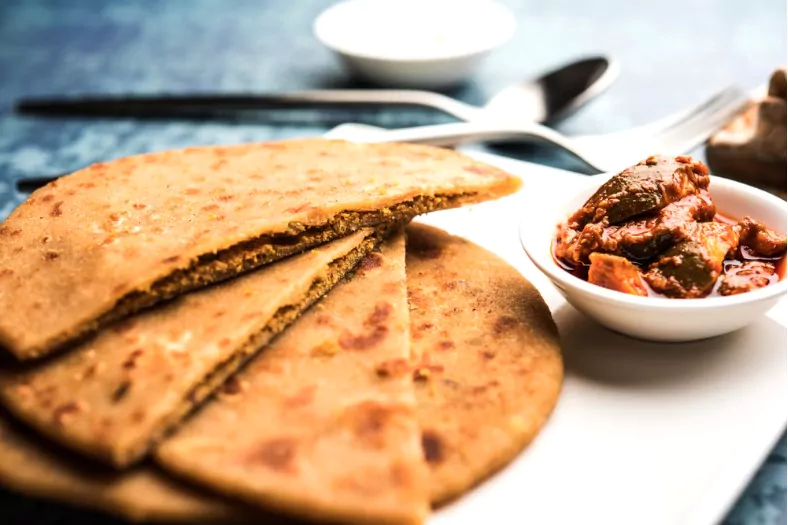
Originating from Bihar, sattu paratha is a popular paratha filled with roasted gram flour mixed with spices. It is a popular street food and is well-loved for its unique taste and high nutritional value.
Ajwain Paratha
Ajwain paratha brings forth the subtle yet distinctive flavor of carom seeds. It is relatively simple, with ajwain (carom seeds) being incorporated into the dough, rendering an aromatic and slightly pungent flavor to the paratha.
Laccha & Lachha Paratha
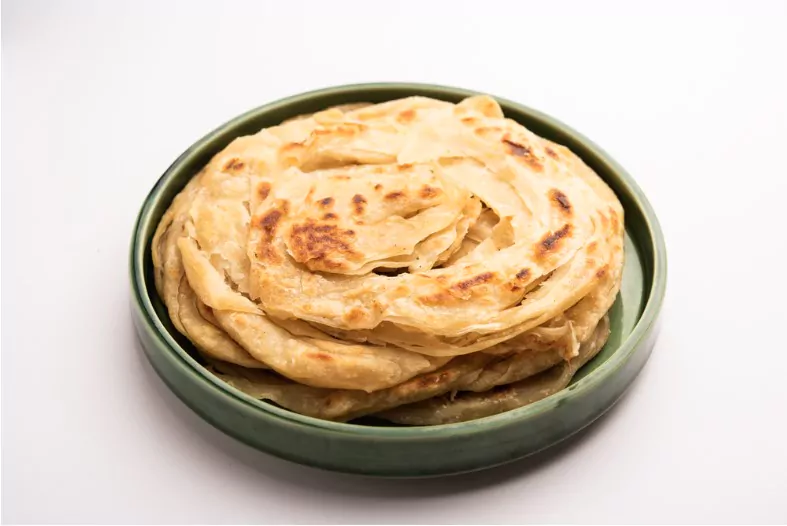
Laccha paratha or Lachha paratha is a layered paratha that is crispy and flaky, often savoured for its distinctive texture. The layers in the paratha are created by coating the rolled dough with ghee and folding it to form pleats. The process is repeated to create multiple layers, resulting in a flavorful and textured Indian bread.
Malabar Parotta
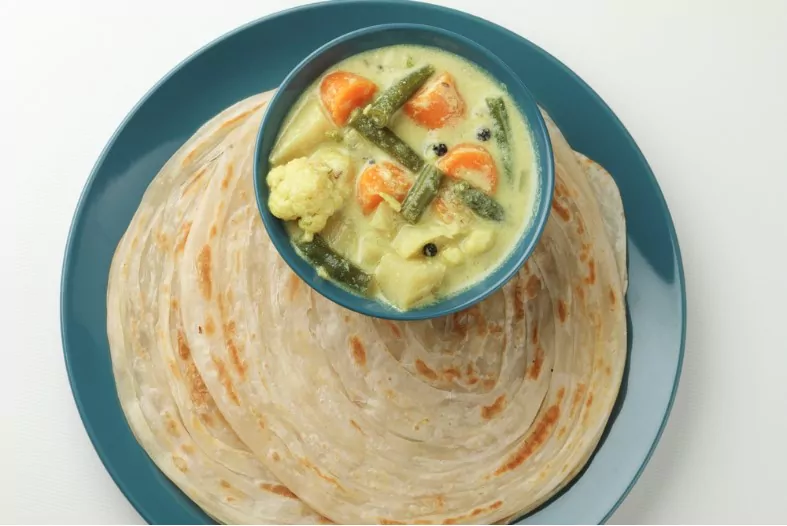
Steaming Malabar parotta, originating from Kerala, stands out with its flaky layers and soft texture. Typically made using all-purpose flour, it is moulded into a spiral or square shape and then cooked to perfection. The end product is a soft, layered flatbread typically served with curry and is a popular street food in many parts of South India.
Palak Paratha: A Green Delight
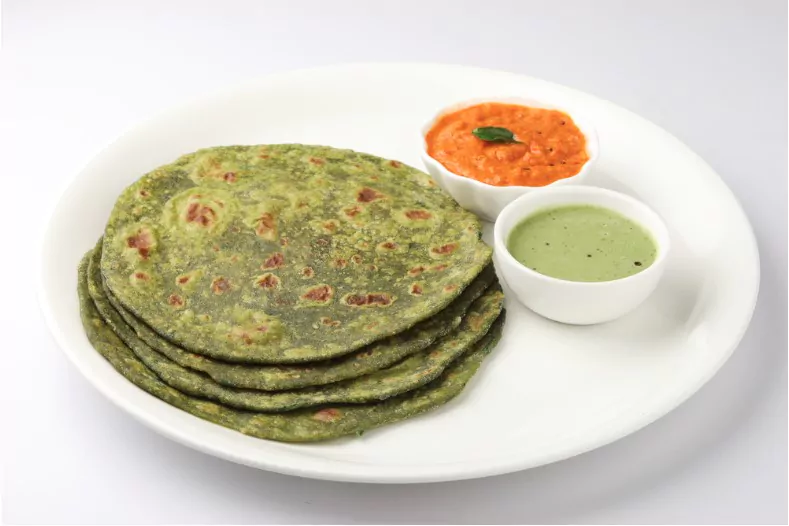
Palak paratha is a nutritious variant where spinach (palak) puree is incorporated into the whole wheat dough. The spinach lends a lovely green hue to the parathas, making them visually appealing besides being packed with nutrition. The inherent goodness of spinach brings along a wealth of vitamins and minerals, rendering this paratha a healthy choice.
3 Variations and Dietary Considerations
Beyond these specific types, countless variations and modifications of paratha recipes are prevalent, catering to diverse tastes and dietary restrictions, such as gluten-free parathas. Whether you prefer a simple wheat flatbread stuffed with a delicious filling or a more elaborate layered paratha, there’s a variant for everyone.
4 Customization & Innovation: The Driving Forces Behind Paratha Evolution
The versatility and adaptability of parathas have allowed for continuous innovation and customization, giving birth to myriad paratha recipes, each narrating its unique story. From incorporating local flavors like the banana leaves in steaming Malabar parotta to integrating global ingredients like cheese in cheese paratha, parathas have embraced evolution, becoming a universal delight.
5 Pairing & Serving: A Confluence of Tastes
A cardinal part of enjoying parathas lies in the art of pairing. The robust, flavorful nature of parathas makes them a perfect companion to a range of accompaniments. From tangy pickles to creamy curds, from succulent meat curries to vibrant vegetarian concoctions, parathas serve as the harmonious backdrop against which various flavors play their symphony.
The experience of relishing a gobi paratha with a dollop of butter melting atop or savouring a paneer paratha with a spicy pickle is quintessentially Indian. Whether it’s the layered laccha paratha serving as the soft embrace to a spicy curry or the wholesome dal paratha providing solace with a side of cooling raita, the possibilities are endless, catering to the diverse palette of tastes.
6 Healthy Alternatives & Dietary Inclusions
In today’s health-conscious era, traditional paratha recipe is an experiencing transformations, incorporating healthy alternatives and catering to varied dietary needs. The inclusion of whole wheat flour, spinach puree, fenugreek leaves, and gluten-free options exemplifies the adaptability of parathas. These modifications not only enhance the nutritional value but also widen the accessibility, ensuring everyone can partake in the joy of consuming parathas.
7 Wrapping Up
Parathas, in their myriad forms and flavors, represent the rich, diverse culinary heritage of India. They are not just stuffed flatbreads or popular street food; they are the carriers of traditions, the storytellers of regional culinary arts, and the comforters providing a homely, nutritious meal.
From aloo paratha, a humble abode of spicy mashed potatoes, to the multi-layered extravaganza of Malabar parotta, each type of paratha is a chapter in the grand cookbook of Indian cuisine. The paratha recipes are like a treasure chest, housing jewels of culinary wisdom, traditional cooking techniques, and regional flavor profiles.
The art of making parathas, the kneading of the dough, the preparation of stuffing mixtures, and the pan-frying, is a dance of hands, a synchronization of movements that have been perfected over the years. The essence of a paratha is not just in its taste; it’s in its making, in the tales it tells, and in the traditions it carries forward.
Community Q&A
About This Article
This article has been viewed 233 times.


